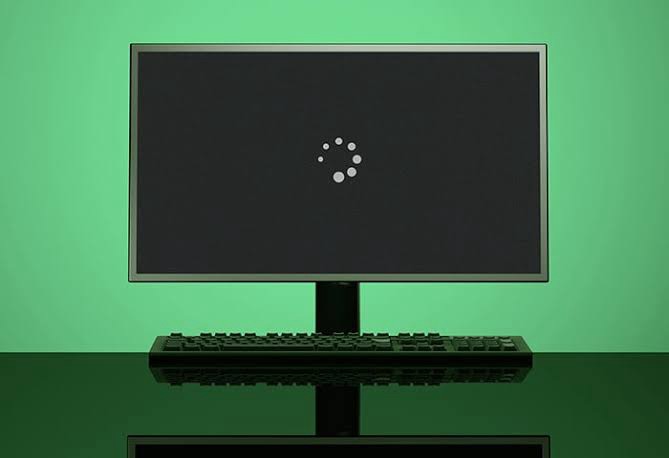How to Fix a Computer Display Problem: Step-by-Step Guide (Windows & Mac).
Is your computer screen blank, flickering, or showing errors? Learn how to fix common display problems on Windows and Mac with this detailed, SEO-optimized guide.

A Complete Step-by-Step Guide
Whether your computer screen goes black, shows distorted images, or flashes unexpectedly, display problems can be frustrating. Fortunately, most display issues can be resolved with a few simple checks and adjustments.
In this step-by-step blog post, we’ll guide you through how to fix common computer display problems on both Windows and macOS systems. Perfect for beginners, this guide is SEO-optimized and includes internal links to enhance your troubleshooting journey.
Common Computer Display Problems
Before diving into solutions, let’s identify the most common display issues users experience:
Blank or black screen Flickering or flashing screen Screen resolution errors Color distortion External monitor not working “No signal” error on monitor
Step-by-Step Guide to Fix Computer Display Problems
Step 1: Check Physical Connections
Why it matters: Loose or damaged cables are one of the most common causes of display issues.
What to Do:
Turn off your computer and monitor. Unplug the video cable (HDMI, VGA, DVI, or DisplayPort) and reconnect it securely. Check for visible damage to the cable or ports. If using a desktop, make sure the graphics card is firmly seated inside the case. Test with another monitor or cable if available.
If your issue is with a second monitor, check out our guide on: How to Set Up Dual Monitors on Windows and Mac.
💡 Step 2: Adjust Brightness and Power Settings
For Laptops:
Try adjusting the brightness keys (usually F1–F12 with a sun icon). Plug in the power cable—some laptops reduce brightness when on battery mode.
For Desktops:
Use the monitor’s physical buttons to increase brightness or contrast.
Step 3: Boot into Safe Mode
Purpose: Safe Mode loads only essential drivers and can help identify software or driver issues.
For Windows:
Restart the PC and press F8 or hold Shift + Restart from the login screen. Select Troubleshoot > Advanced options > Startup Settings. Choose Enable Safe Mode.
For macOS:
Shut down the Mac. Turn it on and immediately press Shift until the Apple logo appears.
If the display works fine in Safe Mode, the issue may be caused by a recent driver or software update.
Step 4: Update or Roll Back Display Drivers
For Windows:
Press Windows + X and select Device Manager. Expand Display Adapters. Right-click your GPU (e.g., Intel, NVIDIA, AMD) and choose: Update Driver to install new updates OR Properties > Driver > Roll Back Driver if the issue began recently
For macOS:
macOS updates include graphics driver updates. Go to System Settings > General > Software Update.
Step 5: Change Screen Resolution and Refresh Rate
For Windows:
Right-click the desktop and select Display Settings. Scroll down and click Advanced display settings. Change the resolution or refresh rate to a lower option to test stability.
For macOS:
Go to System Settings > Displays. Click Display Settings, then choose Scaled and test different resolutions.
Step 6: Test with an External Monitor
Why? This helps determine if the problem lies with your screen or graphics hardware.
Connect an external monitor or TV to your computer. Press Windows + P (Windows) or go to Apple > Display Settings (Mac) to mirror or extend the display. If the external monitor works, your internal display might be faulty.
SEO Tip: Learn How to Mirror iPhone to Mac or How to Fix a Laptop Screen That Won’t Turn On for more display-related solutions.
Step 7: Perform a System Restore or Reset
If the issue started after a software update or installation:
Windows:
Go to Settings > System > Recovery. Choose Reset this PC or Open System Restore.
macOS:
Restart in macOS Recovery Mode (Command + R). Choose Restore from Time Machine or Reinstall macOS.
Bonus Troubleshooting Tips
Run Display Troubleshooter (Windows): Settings > System > Troubleshoot > Other troubleshooters > Display Disable Hardware Acceleration in apps (especially browsers) Go to app settings > disable “Use hardware acceleration” Check for Malware: Some display glitches can be caused by viruses or malware. Run a scan using Windows Defender or a trusted antivirus.
When to Seek Professional Help
If none of the above steps resolve your issue, it could be:
A failing GPU or motherboard A broken screen or inverter (especially in laptops) Overheating or power supply issues
Consider taking your device to a certified technician for hardware diagnostics.
Related Internal Resources
How to Speed Up a Slow Laptop (Windows 10/11) Best Antivirus Tools for PC and Mac How to Fix Laptop Not Charging Issue
